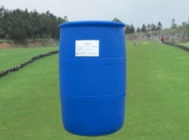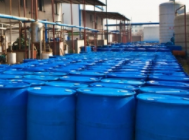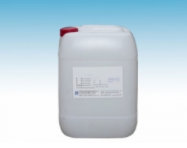The application principle of surfactant in water-based metal cleaning agent is to weaken or offset the adhesion of oil contamination on metal surface by the properties of wetting, penetrating, emulsifying, dispersing and solubilizing of surfactant, and to accelerate oil contamination from metal surface to be emulsified, dispersed and suspended in lotion by mechanical and physical methods. Solubilizing micelles.

Surfactant is used as cleaning agent in cleaning liquid to reduce the interfacial tension between cleaning liquid and dirt. First, the cleaning liquid can wet the surface of dirt, make the dirt swell, and then penetrate into the dirt to disperse the dirt. If the dirt belongs to oil, the grease first forms spherical aggregation on the metal surface, and the surfactant is squeezed in, so that the dirt is detached from the metal surface and moved to the cleaning solution. The insoluble oil contamination particles are enclosed in the surfactant micelles and "solubilized" in the cleaning solution, and will not be adsorbed on the metal surface. When washing, if there is mechanical force, it will help to separate the dirt from the metal surface and improve the cleaning effect. The emulsion prepared by surfactant not only has the cleaning effect of the cleaning agent mentioned above, but also has the similar dissolution principle of solvent. The presence of internal oil phase will greatly enhance its dissolution and cleaning effect on oil contamination. The ideal cleaning emulsion generally has the following four characteristics:

(1) The emulsion is stable and the oil has a strong ability to dissolve oil pollution.
(2) Oil phase viscosity is low and easy to wash.
(3) The oil phase is good, non-volatile, non-toxic, and the cleaning process will not produce pollution.
(4) Easy to demulsify and recycle.
Water based metal cleaning also requires adding inorganic auxiliaries: corrosion inhibitor, cosolvent, foam stabilizer, defoamer, filler and so on.

Formula: Nonylphenol polyvinyl chloride (20) ether 80% oleic acid 8% triacetamide 8% triacetamide borate 8% monobutyl ether glyoxalate 8% silicone defoamer 0.2% water balance dilution into 5% note: the above percentage is the mass ratio.
In the process of pickling, a lot of acid fog will be produced, which affects the health of workers and pollutes the environment. At the same time, it will corrode factories and equipment. In order to improve the rust removal effect of pickling and prevent acid from over-corrosion, surfactants are added to sulfuric acid or hydrochloric acid in pickling solution to inhibit acid fog, speed up pickling and prevent over-corrosion. The occurrence of corrosion.